Part 1: Understanding Cod and its Versatility
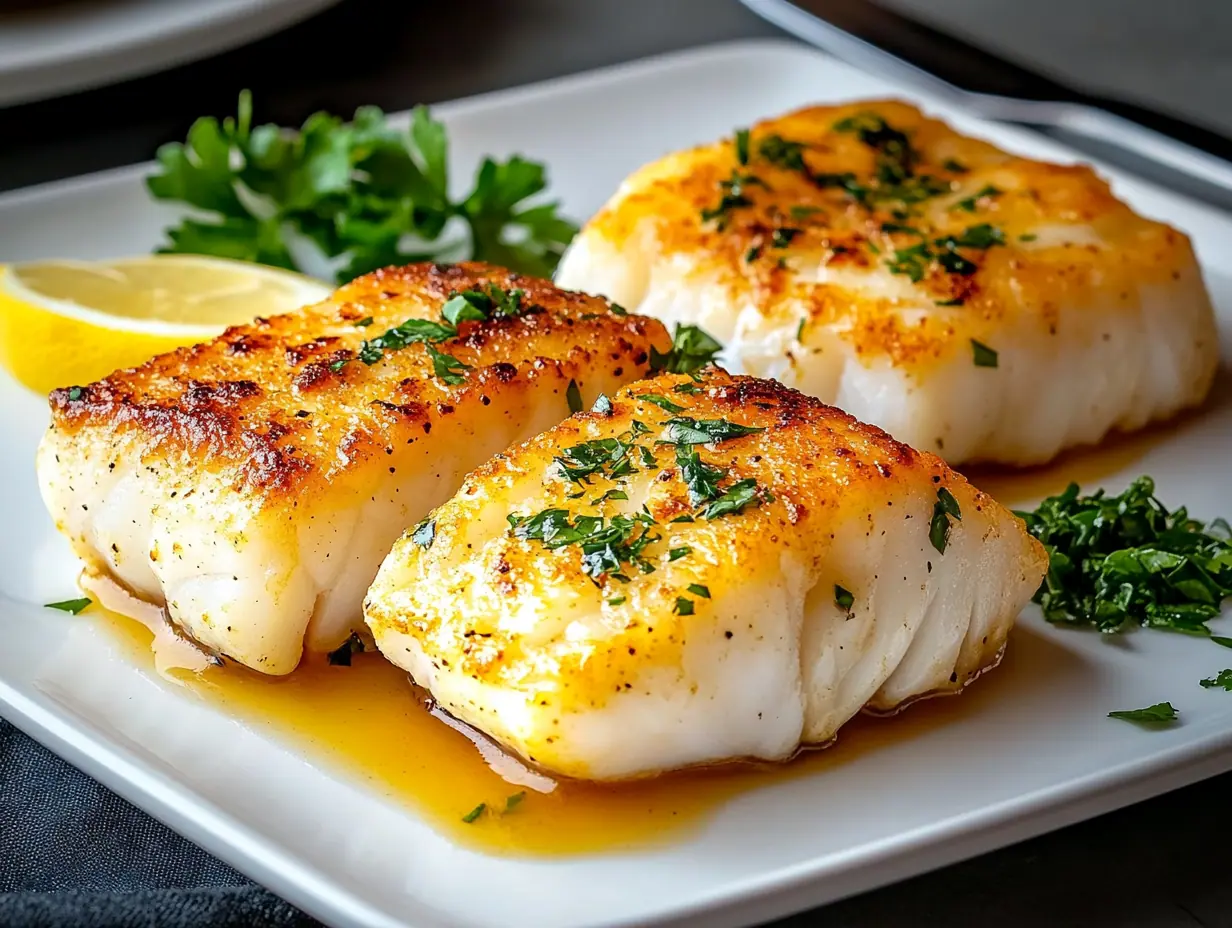
Introduction
Cod is a popular and versatile fish known for its mild flavor and flaky texture. Whether you’re preparing a quick weeknight dinner or a fancy meal, choosing the right cooking technique is essential to bring out the best in cod. Different techniques can preserve moisture, enhance flavor, and prevent the fish from becoming dry or bland.
Selecting the ideal method depends on both the type of cod and your personal preference. From pan-frying to baking and grilling, there’s no shortage of ways to prepare this delicious fish. To get the most out of your cod dishes, it’s important to understand the options available and the benefits of each approach. For more detailed guides on cod recipes, check this article from Livestrong, or tips from Better Homes & Gardens.
Why Cod is a Popular Choice
Cod’s versatility, mild taste, and nutritional benefits have made it a favorite across the globe. It has an approachable flavor that can be enjoyed by seafood lovers and those new to fish dishes alike. Let’s explore in more detail why cod is such a popular choice:
- Mild Flavor: Cod’s delicate, non-fishy taste makes it an ideal canvas for a wide variety of seasonings and sauces. Unlike stronger fish like mackerel or salmon, cod’s neutral flavor allows it to be paired with a vast array of herbs, spices, and accompaniments without overwhelming the palate. Whether you prefer a simple lemon-butter sauce or a spicier Mediterranean-style rub, cod will complement the flavors without competing.
- Flaky Texture: The flaky texture of cod is one of its most desirable characteristics. When cooked properly, cod should gently flake apart with a fork, providing a satisfying mouthfeel. The delicate structure of cod lends itself to light dishes, and the flakes work well in salads, soups, and fish tacos. However, this also means cod can be tricky to handle, as overcooking can cause it to fall apart easily. Understanding the correct cooking methods will help you achieve a perfect balance of flaky yet firm fish.
- Nutritional Benefits: Cod is a lean source of protein with very little fat, making it a heart-healthy option. It’s also rich in essential nutrients such as omega-3 fatty acids, vitamin B12, and selenium. Omega-3s are known for their role in promoting heart health, reducing inflammation, and supporting brain function. Additionally, cod is low in calories, making it a great choice for those watching their calorie intake or following a low-fat diet. Its nutritional profile makes it an ideal option for balanced meals that don’t compromise on taste.
- Sustainability: In recent years, sustainability has become a significant consideration when choosing seafood. Atlantic cod, once overfished, has seen a resurgence in availability due to improved management and sustainability practices. However, when purchasing cod, it’s essential to check whether it’s certified by a sustainability organization, such as the Marine Stewardship Council (MSC). Pacific cod is generally considered more sustainable than Atlantic cod, thanks to stricter fishing regulations and better-managed fisheries.
Understanding the benefits of cod helps you make informed decisions about which cooking method to use, ensuring you can create delicious, nutritious, and environmentally friendly dishes.
Different Types of Cod
Cod comes in several varieties, each with its own flavor profile, texture, and best-use cooking methods. To choose the ideal technique for preparing cod, it’s essential to know the differences between the most commonly available types of cod.
- Atlantic Cod vs. Pacific Cod:
- Atlantic Cod: Atlantic cod has a firm texture and slightly sweeter flavor. It is found in colder waters of the North Atlantic Ocean, and its larger, thick fillets make it ideal for methods like grilling, pan-frying, and broiling, where the fish is exposed to high heat. Atlantic cod is also a staple in many traditional dishes, such as British fish and chips.
- Pacific Cod: Pacific cod, on the other hand, is more delicate and lean compared to its Atlantic counterpart. It’s found in the colder waters of the Pacific Ocean, especially around Alaska. Pacific cod has a milder flavor and a more tender texture, making it perfect for gentler cooking methods like poaching, steaming, or baking. Due to its more delicate nature, Pacific cod is less likely to withstand high-heat cooking techniques without falling apart.
- Black Cod (Sablefish): Though technically not a member of the cod family, black cod (also known as sablefish) is a popular substitute due to its rich, buttery flavor and smooth texture. Black cod has a higher fat content, which makes it incredibly moist and forgiving during cooking. This variety works exceptionally well with slower, more delicate methods like baking or poaching, as it naturally stays tender without drying out. Black cod is also a favorite for smoking due to its fattier flesh, which absorbs flavors more effectively.
- Choosing the Right Type of Cod for Different Cooking Methods:
- For high-heat methods like pan-frying or grilling, Atlantic cod is the preferred choice due to its firmer texture, which holds up well.
- For more delicate techniques such as steaming or poaching, Pacific cod’s lighter structure and mild flavor make it a better candidate.
- Black cod is versatile but shines in rich preparations that complement its buttery profile, such as slow-baked dishes with miso or teriyaki glaze.
Knowing the differences between these types of cod allows you to choose the best one for your cooking method, ensuring the most flavorful and well-cooked results.
Best Cooking Techniques for Cod
Cod can be prepared using a wide range of techniques, each offering unique benefits depending on the type of dish you’re aiming to create. Let’s break down some of the most popular methods for cooking cod and discuss their advantages.
- Pan-frying: Pan-frying is a fantastic way to get a crispy, golden exterior while keeping the interior moist and tender. This method works particularly well for thinner fillets or for adding texture to the outside of the fish. Pan-frying cod allows you to create a delicious crust on the surface, which pairs well with simple seasonings like salt, pepper, and fresh herbs.
- Baking: Baking is one of the most popular and straightforward methods for cooking cod, as it requires minimal preparation and effort. The even heat of the oven gently cooks the fish, preserving its natural moisture. Baking also allows you to add additional ingredients such as vegetables, spices, and sauces directly to the dish, creating a complete meal in one pan. Baking cod in foil or parchment paper (en papillote) is a great way to lock in moisture and infuse the fish with flavors from herbs, lemon, or garlic.
- Grilling: Grilling cod can be a bit tricky due to its delicate texture, but when done correctly, it adds a smoky, charred flavor that enhances the fish. Grilling works best for thicker cuts of cod, such as Atlantic cod. To prevent the fish from sticking to the grill or falling apart, it’s important to oil both the fish and the grill grates before cooking. You can also grill cod in foil packets to protect it from the direct heat while still allowing the smoky flavor to develop.
- Poaching: Poaching cod is an excellent method for those looking for a light and healthy way to prepare fish. In poaching, the fish is gently simmered in a flavorful liquid such as broth, wine, or milk. This technique keeps the fish moist and tender without adding extra fat. Poached cod is incredibly delicate and works well in dishes like soups, stews, or with a light sauce. The key to successful poaching is to maintain a gentle simmer, as boiling the fish can cause it to become tough.
- Broiling: If you’re short on time, broiling is a fast way to cook cod while achieving a crispy top layer. The high, direct heat of the broiler quickly cooks the fish and adds a golden-brown finish to the surface. Broiling is best for thicker fillets and should be closely monitored to prevent overcooking.
- Steaming: Steaming is a gentle method that preserves the fish’s moisture and delicate flavor. It’s also one of the healthiest ways to cook cod since it requires no added fat. Steamed cod is often paired with light sauces and vegetables for a nutritious meal. Adding aromatics like ginger or lemon to the steaming water can subtly enhance the flavor of the fish.
Each of these methods offers different advantages depending on the desired outcome. Pan-frying and grilling add texture, while baking and poaching ensure tender, flavorful results. Choose the cooking method based on the type of cod you’re using and the flavors you want to highlight in the dish.
For a delicious and easy dinner idea, consider trying this easy 3-ingredient sloppy joe recipe, which pairs well with many side dishes, including fish like cod.
How to Pan-Fry Cod Perfectly
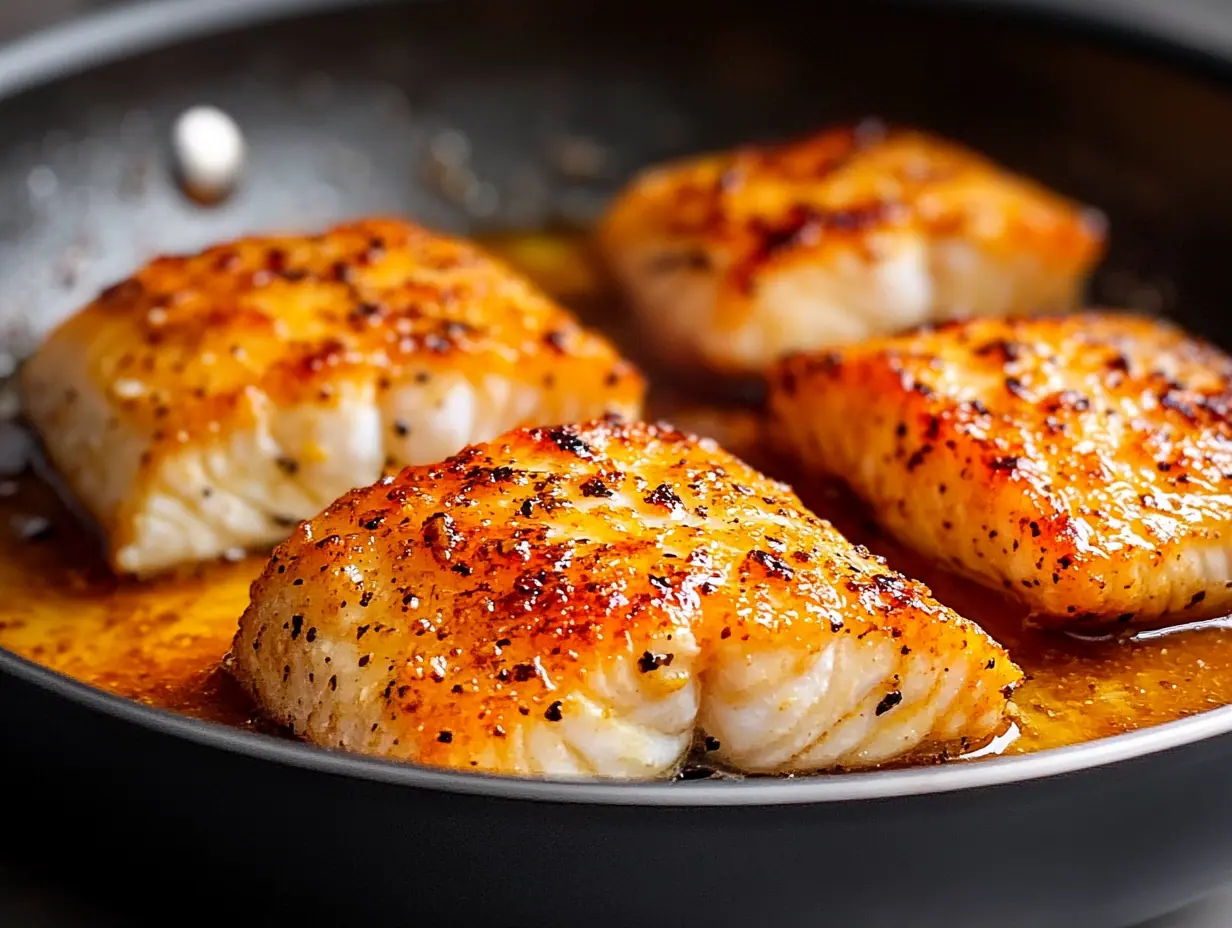
Pan-frying cod is one of the best ways to achieve a crispy exterior while keeping the inside tender and moist. Here’s how to do it perfectly every time:
Step-by-Step Instructions:
- Preparing the fish: Start by patting the cod fillets dry with a paper towel. This step is crucial, as removing excess moisture helps the fish develop a golden-brown crust when it hits the hot pan. Season the cod with salt, pepper, and any other desired herbs or spices. For added flavor, try rubbing the fillets with a bit of garlic powder, paprika, or a spritz of lemon juice.
- Choosing the right oil: The type of oil you use matters when pan-frying. Choose an oil with a high smoke point, such as canola oil, avocado oil, or grapeseed oil. These oils withstand the high heat necessary for creating a crispy crust without burning. Avoid butter for this stage, as it can burn quickly.
- Cooking time and temperature: Preheat a large skillet over medium heat until it’s hot but not smoking. Add a tablespoon of oil to the pan and let it heat up for a few seconds. Carefully place the cod fillets into the pan, making sure not to overcrowd them. Cook the fillets for about 4-5 minutes per side, depending on their thickness. You’ll know it’s time to flip the cod when the edges are golden brown and crispy.
Tips for Success:
- Get a golden crust: The secret to a beautifully crisp crust is not to touch the fish until it’s ready to flip. Letting the cod cook undisturbed allows the exterior to develop a rich, golden color. Flipping the fish too early can cause the crust to stick to the pan and break apart.
- Avoid overcooking: Cod cooks quickly, so be careful not to overcook it. Once the cod flakes easily with a fork and reaches an internal temperature of 145°F, it’s ready. Overcooking can lead to dry, tough fish.
Pan-frying cod creates a flavorful, crispy surface while preserving the fish’s tender, moist interior. Serve with a squeeze of lemon and a side of vegetables or rice for a simple yet delicious meal.
If you enjoy pan-fried dishes, you might also love this easy Bibibop copycat chicken recipe for a quick and flavorful meal.
Baked Cod: A Classic and Healthy Method
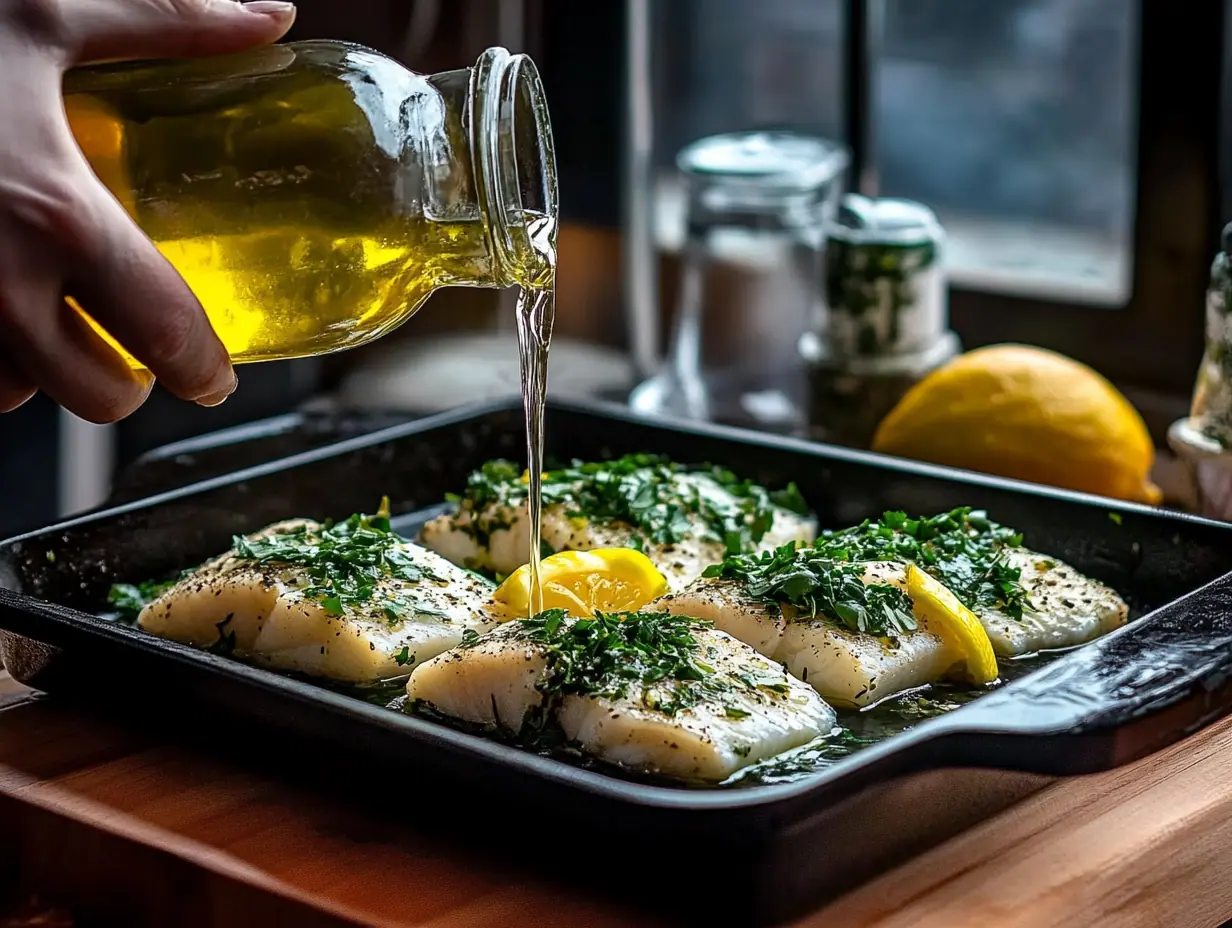
Baking is one of the most straightforward and foolproof methods for preparing cod. It’s a low-effort technique that ensures moist, tender fish every time.
Step-by-Step Guide:
- Prepping the cod: Start by seasoning the cod fillets with olive oil, salt, and pepper. Adding fresh herbs, garlic, or a squeeze of lemon juice can elevate the flavors. Place the fillets in a greased baking dish, ensuring they are spread out evenly.
- Temperature and bake time: Preheat your oven to 400°F. Bake the cod for about 10-12 minutes, depending on the thickness of the fillets. The fish should be opaque and easily flake with a fork when fully cooked. If you’re unsure, check the internal temperature with a thermometer; the fish should reach 145°F.
- Foil-baked option: For extra moisture, you can bake the cod in foil or parchment paper. This technique, known as en papillote, locks in moisture and infuses the fish with the flavors of the herbs and seasonings inside the packet. Simply place the seasoned fillets on a piece of foil or parchment, fold the edges to seal, and bake for 12-15 minutes.
Variations:
- Mediterranean-style baked cod: Top the cod fillets with chopped tomatoes, kalamata olives, capers, and a drizzle of olive oil before baking for a Mediterranean twist.
- Lemon garlic baked cod: A simple yet flavorful combination of garlic, lemon juice, and parsley enhances the cod’s mild flavor. You can find this type of recipe in resources like The Mediterranean Dish, which is perfect for lighter meals.
Baking cod is an easy, healthy method that works well for both beginner and experienced cooks. It’s perfect for weeknight dinners when you need a quick, nutritious meal without much fuss.
Part 2: More Advanced Techniques and FAQs
Grilling Cod: How to Master It
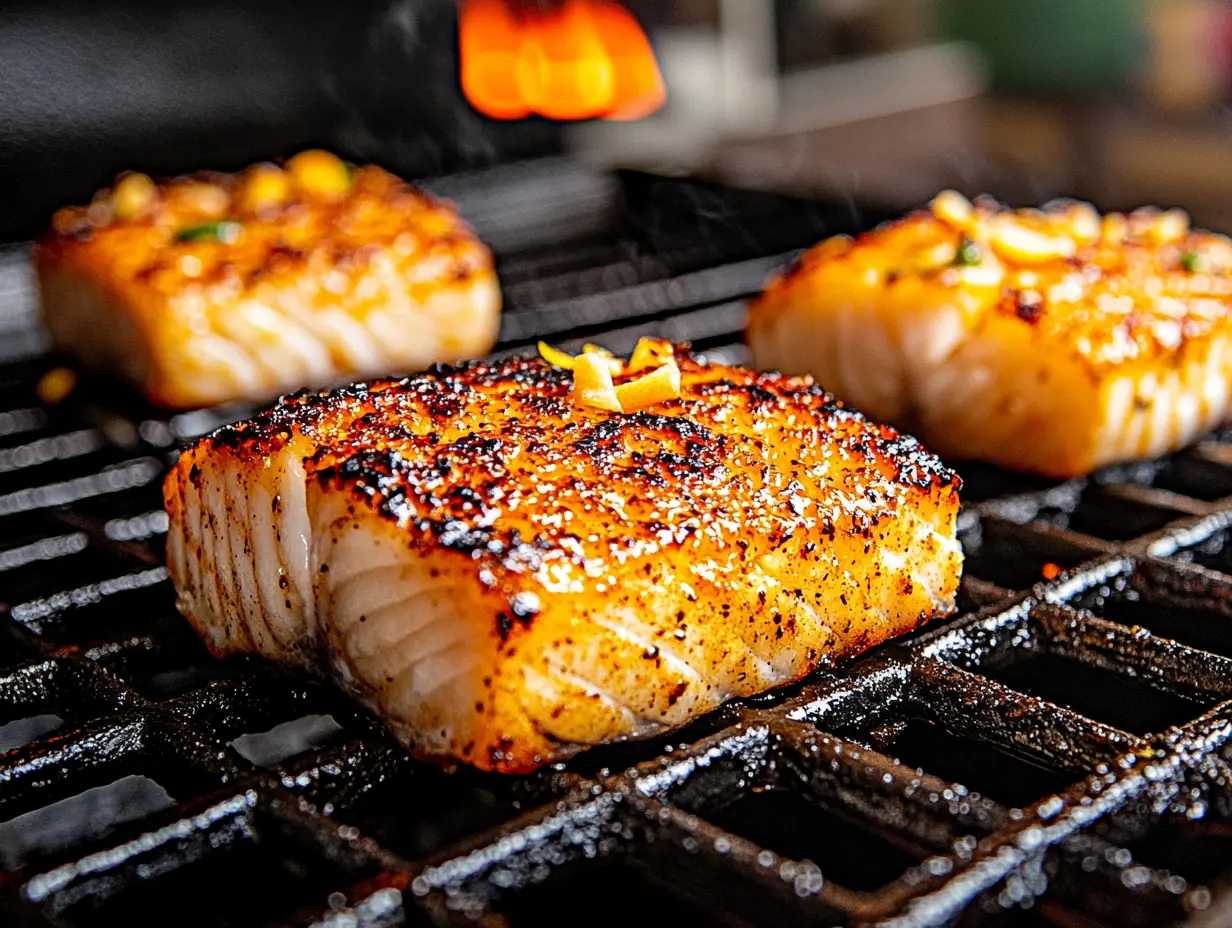
Grilling cod can seem intimidating due to its delicate texture, but when done correctly, it results in a perfectly charred exterior with a moist, tender interior.
Steps for Grilling Success:
- Preparing the grill: Start by preheating your grill to medium-high heat. Make sure to oil the grill grates to prevent sticking. You can use a grill brush to apply a thin layer of oil, or simply rub the oil directly onto the fish.
- Seasoning the cod: Season the cod fillets with olive oil, salt, and pepper. You can also use marinades that complement the smoky flavor, such as a blend of garlic, lemon, and herbs.
- Cooking time and flipping: Place the fillets directly on the grill. Cook for about 4-5 minutes on each side, depending on the thickness of the fillets. To avoid breaking the fish, use a wide spatula to carefully flip the fillets halfway through cooking. The cod should be opaque and flake easily when done.
Best Practices:
- Avoid sticking: Cod’s delicate texture makes it prone to sticking to the grill. To prevent this, ensure that both the grill grates and the fish are well-oiled. Another option is to use a fish basket or grill the cod in foil to protect it from direct contact with the grates.
- Prevent overcooking: Cod cooks quickly, especially on a grill. Keep a close eye on the fillets and remove them from the heat as soon as they become opaque and flaky.
Grilling cod adds a smoky, charred flavor that complements the fish’s mild taste. It’s an ideal method for summer barbecues and pairs well with grilled vegetables, rice, or salads.
Poaching Cod for Tender Results
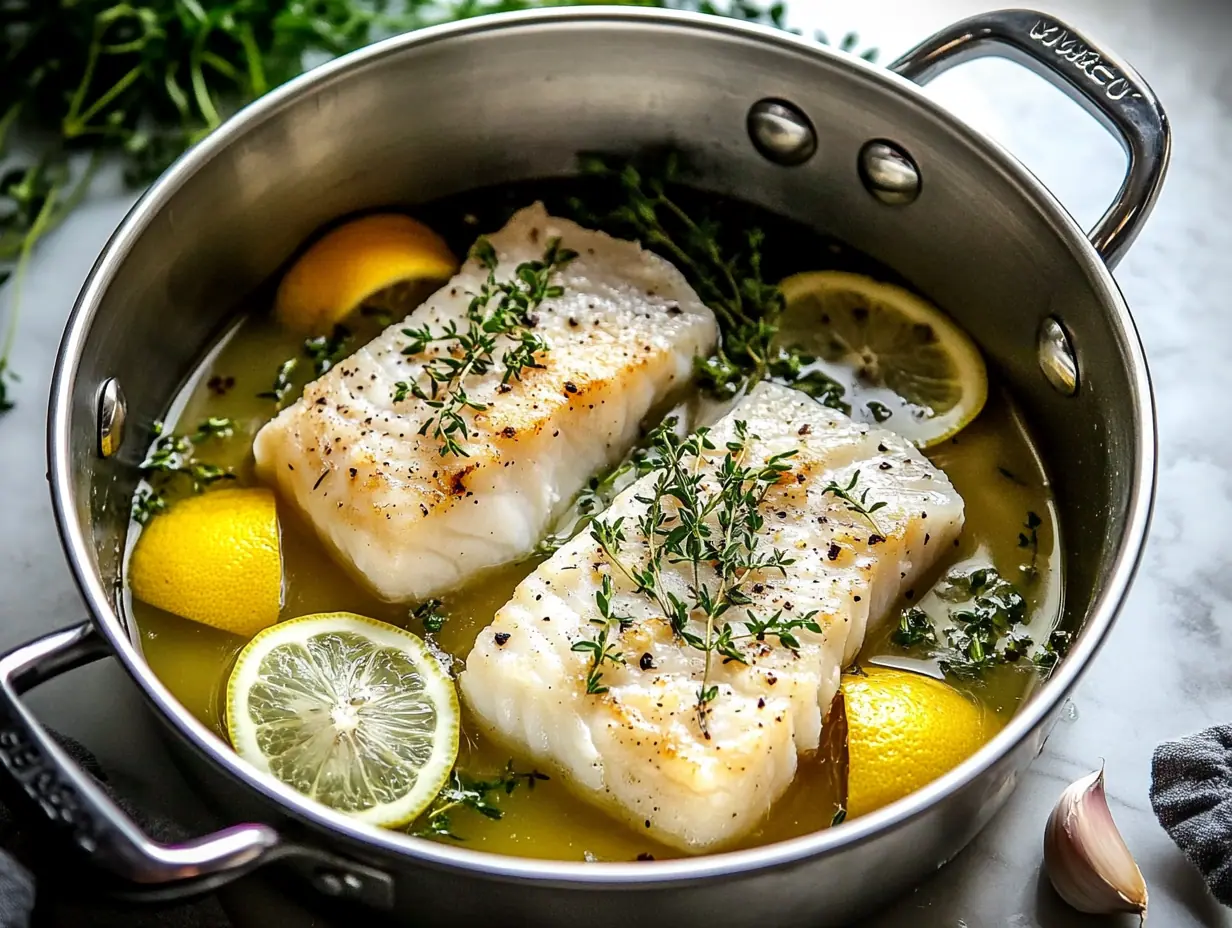
Poaching is one of the gentlest cooking methods, resulting in a moist and tender fillet. The slow cooking process allows the fish to absorb the flavors of the poaching liquid, making it a flavorful and healthy option.
How to Poach Cod:
- Choosing the poaching liquid: Start by selecting a flavorful liquid, such as water, broth, wine, or milk. Each liquid will impart a different flavor to the fish, with milk creating a creamy finish, while wine or broth adds a savory depth. For extra flavor, add aromatics like bay leaves, garlic, or fresh herbs to the poaching liquid.
- Temperature: Heat the liquid in a large saucepan or skillet over medium heat until it reaches a gentle simmer. Be careful not to let the liquid come to a boil, as this can cause the fish to become tough.
- Cooking time: Gently place the cod fillets in the simmering liquid and cook for about 6-8 minutes, depending on the thickness of the fish. The cod should be opaque and easily flake apart when fully cooked.
How to Infuse Flavor Through Poaching Liquids:
To elevate the flavor of poached cod, consider infusing the poaching liquid with aromatics. For example, adding fresh thyme, lemon, or fennel to the broth can add subtle complexity to the fish. Alternatively, using coconut milk as a poaching base can give the dish a rich, tropical flavor.
Poaching is an excellent option for those looking for a lighter, more delicate fish dish. It works particularly well with side dishes like steamed vegetables, quinoa, or a fresh herb salad.
Steaming Cod: A Simple, Healthy Option
Steaming is another gentle cooking method that helps retain the cod’s moisture and nutrients, resulting in a tender, delicate texture. It’s one of the healthiest ways to prepare cod, as it requires no added fat.
Steaming Steps:
- Use a steamer basket: Place the cod fillets in a steamer basket over a pot of simmering water. If you don’t have a steamer basket, you can use a bamboo steamer or place the cod on a plate that fits inside the pot.
- Flavoring options: Before steaming, season the cod with salt, pepper, and your choice of herbs. Adding aromatics like ginger, garlic, or lemon slices to the steaming water enhances the flavor without overpowering the fish.
- Cooking time: Steam the cod for 10-12 minutes, or until the fish is opaque and flakes easily with a fork.
Steaming cod preserves the fish’s delicate flavor and texture while keeping the dish light and healthy. Serve steamed cod with a simple vinaigrette, steamed vegetables, or rice for a balanced meal.
Additional Tips for Cooking Cod
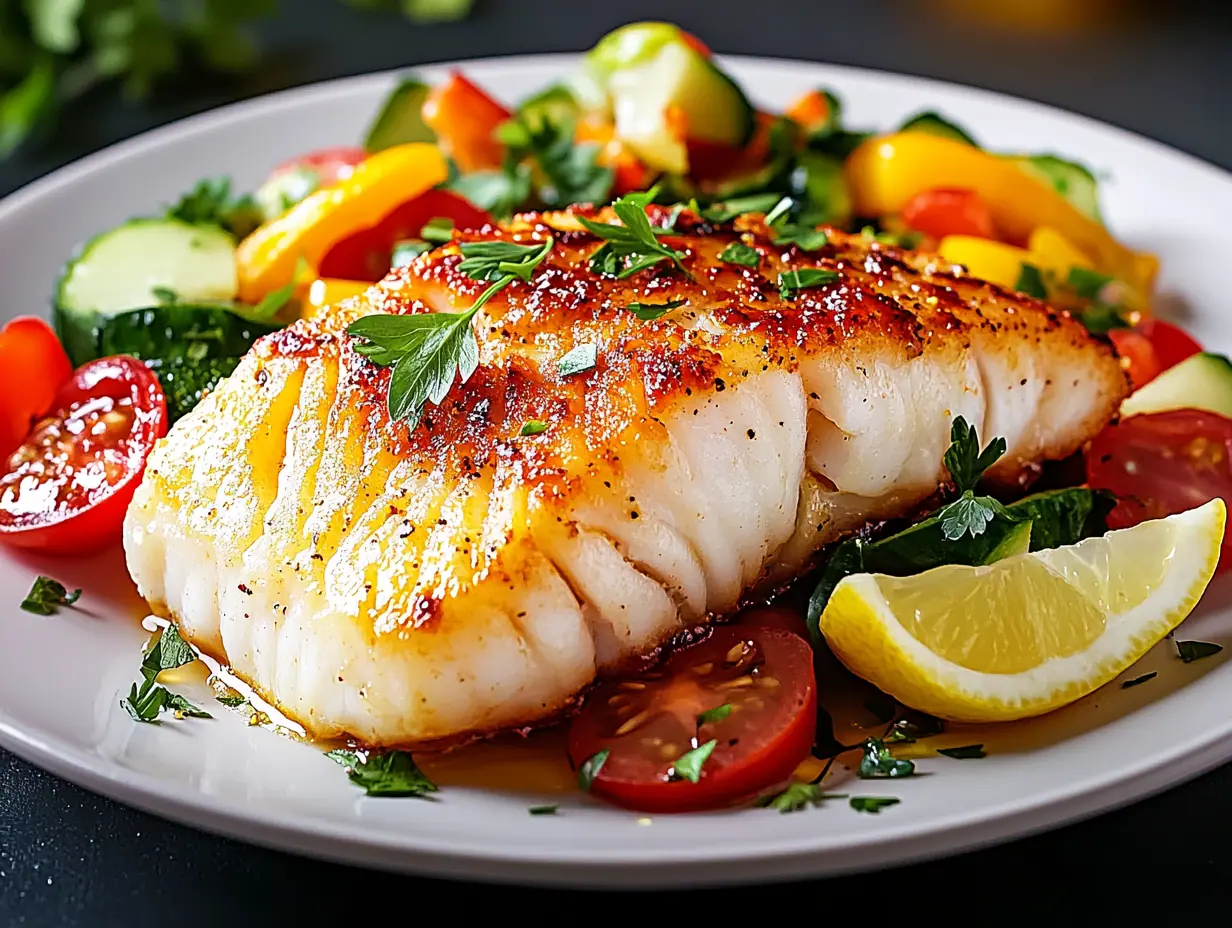
Cooking cod to perfection requires some additional tips and tricks to get the most out of your fish.
- Choosing the right seasoning and marinades: Cod’s mild flavor means it can be paired with a wide variety of seasonings. From lemon butter to citrus-based marinades, cod absorbs flavors well without being overpowering. Try marinating cod for 30 minutes in a blend of olive oil, garlic, and herbs before cooking.
- How to prevent overcooking: Cod is easy to overcook due to its delicate texture. The best way to avoid this is by keeping a close eye on the fish and checking for doneness with a fork. The fish should be opaque and flake easily, with an internal temperature of 145°F.
- Fresh vs. frozen cod: While fresh cod is always preferable, frozen cod can also be a great option, especially if it’s been flash-frozen. When using frozen cod, be sure to thaw it properly in the fridge overnight before cooking. Avoid using a microwave to defrost the fish, as it can cause uneven thawing and affect the texture.
Looking for more inspiration? Check out this delicious homemade Eskimo pie recipe to satisfy your sweet tooth after a savory cod dish.
FAQs
- What’s the healthiest way to cook cod?
The healthiest way to cook cod is through steaming or poaching, as these methods preserve the fish’s natural nutrients without the need for added fat. Steamed or poached cod is tender, moist, and packed with flavor when paired with herbs or aromatics. - Can I cook cod from frozen?
Yes, you can cook cod from frozen, but you’ll need to adjust the cooking time. Increase the cooking time by about 5-10 minutes, depending on the method. For best results, bake or steam frozen cod, as these methods are more forgiving with frozen fish. - How can I tell when cod is fully cooked?
Cod is done when it reaches an internal temperature of 145°F. The fish should be opaque and easily flake apart with a fork. Avoid overcooking, as cod can become dry and fall apart. - What’s the difference between Atlantic and Pacific cod in cooking?
Atlantic cod is firmer and holds up better in high-heat methods like grilling or pan-frying, while Pacific cod is more delicate and better suited to steaming or poaching. Both are mild in flavor but differ in texture. - Why is my cod falling apart during cooking?
Cod can fall apart if it’s overcooked or handled too much during cooking. To prevent this, use a gentle cooking method like steaming or poaching and flip the fish carefully if pan-frying or grilling. - Can I grill cod on a gas grill or only charcoal?
Both gas and charcoal grills work well for grilling cod. Gas grills offer more precise temperature control, while charcoal grills add a smoky flavor. Just be sure to oil the grates and fish to prevent sticking.
Conclusion
Cod is a versatile fish that can be cooked using a variety of techniques, from pan-frying to baking and grilling. Each method brings out different textures and flavors, allowing you to tailor your dish to your liking. By mastering these techniques, you’ll be able to prepare cod that is perfectly flaky and flavorful every time.
Don’t hesitate to try different methods and find the best cooking technique for cod that suits your taste and cooking style!